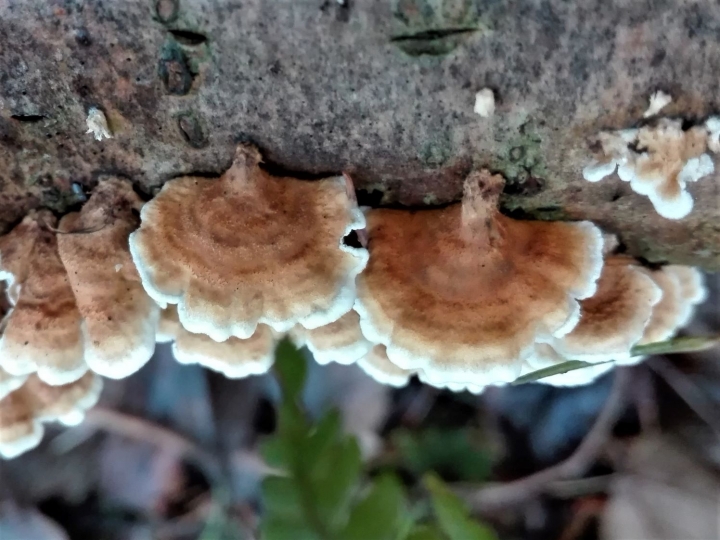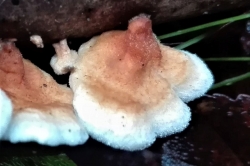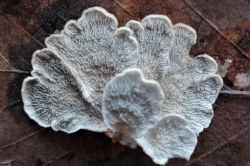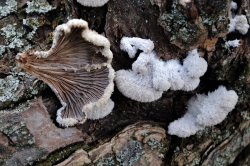Your basket is currently empty!
Home / Mushroom Guide /
Crimped Gill
Crimped Gill
A small size mushroom, growing in overlapping clusters on fallen branches or decaying trunks of hardwoods. Once you have checked its underneath, it is unmistakable.
| Mushroom Type | |
| Common Names | Crimped Gill (EN), Tagell Grech (CY), Fałdówka Kędzierzawa (PL), Bükk-Eresgomba (HU) |
| Scientific Name | Plicaturopsis crispa |
| Synonyms | Plicatura crispa, Plicatura faginea, Trogia faginea, Merulius fagineus |
| Season Start | All |
| Season End | All |
| Average Mushroom height (CM) | |
| Average Cap width (CM) | 1-2.5 |
Fruiting Body
1-2.5 cm wide, somewhat fan shaped (spathulate) or semi-circular. Attached to the substrate in one point.
Its upper surface is finely velvety, smooth with white to ochre, yellow brown concentric zones. Its margin is lobed, undulating, white.
Flesh
Thin, papery, white
Possible Confusion
Splitgill (Schizophyllum commune), pictured, has white, hairy skin, also has pseudo-gills, but they are longitudinally split.
Spore Print
Spore print is white. Spores are smooth; thin walled; cylindrical, curved and sausage shaped.
Taste / Smell
Inedible, but non-toxic.
Frequency
Uncommon and rarely reported.
Other Facts
Crimped gill is often colonized by other organisms. If found with red marks on the wrinkled lower surface, it is a clear sign of being colonized by Serratia marcescens, a yeast-like Gram-positive bacteria.


 (4 votes, average: 4.25 out of 5)
(4 votes, average: 4.25 out of 5)


























Leave a Reply